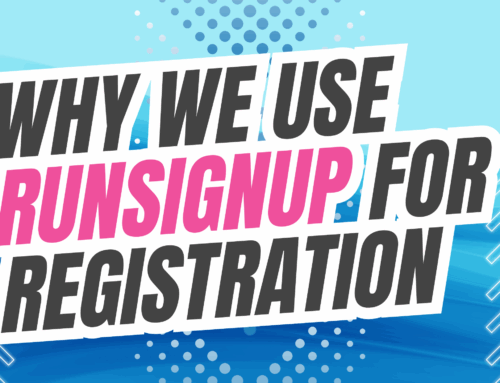For most race directors, race packet pickup is a logistical necessity. One of those tasks that must be handled well but rarely adds much excitement. However, with a little creativity, what’s usually a behind-the-scenes operation can become a strategic asset that boosts both revenue and participant satisfaction.
Race packet shipping turns that corner. Instead of relying solely on in-person pickup, you offer participants the option to have their bib, shirt, and other essentials delivered right to their doorstep. It’s a modern convenience that more athletes expect…and are willing to pay for.
Why Race Packet Shipping Works (and Pays Off)
At its core, race packet shipping works because it meets people where they are. They are busy, mobile, and increasingly accustomed to convenience. Whether they’re first-timers or seasoned athletes, today’s participants are used to the ease of e-commerce, and they expect similar flexibility from race organizers.
For participants, the appeal is simple: time saved and stress avoided. Many athletes juggle demanding work schedules, family obligations, or travel plans that make traditional packet pickup a hassle. Instead of carving out a Friday afternoon to drive across town or take time off work, they can opt for delivery and know they’re race-ready the moment their packet arrives. It removes one more barrier to entry and improves the overall experience before race day even begins.
From an operational standpoint, offering packet shipping creates breathing room for your team. It allows your staff and volunteers to focus on delivering a quality experience rather than rushing to keep up with high-volume distribution. With fewer packets to organize and fewer last-minute hiccups, your packet pickup process becomes more streamlined and enjoyable for everyone involved.
SPECIAL NOTE: If you have a packet pickup sponsor, such as a retailer or gym that benefits from foot traffic. it’s essential to communicate your strategy clearly. Help them understand that shipping is being offered as an option to improve participant experience and reduce friction, not to eliminate in-person pickup altogether. Position it as part of a hybrid approach that still drives traffic from the majority of participants while expanding accessibility.
Financially, it’s a smart play. Packet shipping introduces a new, reliable revenue stream that’s tied directly to participant choice. Unlike sponsorships or vendor fees, which may fluctuate year to year, this is participant-driven income that scales naturally with your event. If even 10-20% of your registrants choose the shipping option, you’re looking at thousands of dollars in added revenue with relatively low overhead. And unlike merchandise, there’s no risk of leftover inventory.
In short, packet shipping hits the trifecta: it improves participant satisfaction, enhances race-day logistics, and adds meaningful revenue to your event. It’s not just a nice-to-have anymore, it’s a competitive edge.
How to Implement Race Packet Shipping without the Headache
Start by building shipping directly into your registration platform. Services like RunSignup make this simple, allowing you to add it as a paid add-on. Just be sure to set a cutoff date that ensures packets arrive on time and communicate those deadlines clearly on your website and email campaigns.
Next, choose a reliable shipping provider. Whether you’re using USPS, UPS, or another service, factor in the cost of packaging and labor. I always recommend trackable shipments for peace of mind for both you and your participants.
Finally, prepare for the rare hiccup. Shipments can get delayed or lost, so have a backup plan—whether it’s a limited number of race-day replacements or a “late packet” station on site.
Making the Most of Shipping Opportunities
If you want to take it a step further, consider bundling merchandise with shipping. It’s a natural upsell: participants already expect a package, so why not include a visor, water bottle, or commemorative item? You can even work with sponsors to include samples or promotional material, increasing the value of the packet for everyone involved.
Another tactic is to offer different shipping tiers. For example, expedited shipping at a premium price could serve last-minute registrants, while standard shipping handles the early birds.
Take the Next Step
Race packet shipping is no longer a novelty, it’s quickly becoming an expectation. By adding it to your event strategy, you’re not just keeping up with trends; you’re creating a better experience and building a healthier bottom line.
If you’re ready to start offering packet shipping or want to refine your process, we’re here to help. Let’s make your next race smoother, smarter, and more profitable. Send us a message and we’ll help you set it up right the first time.
Common Questions
Race packet shipping is no longer a novelty, it’s quickly becoming an expectation. By adding it to your event strategy, you’re not just keeping up with trends; you’re creating a better experience and building a healthier bottom line.
If you’re ready to start offering packet shipping or want to refine your process, we’re here to help. Let’s make your next race smoother, smarter, and more profitable. Send us a message and we’ll help you set it up right the first time.









Leave A Comment